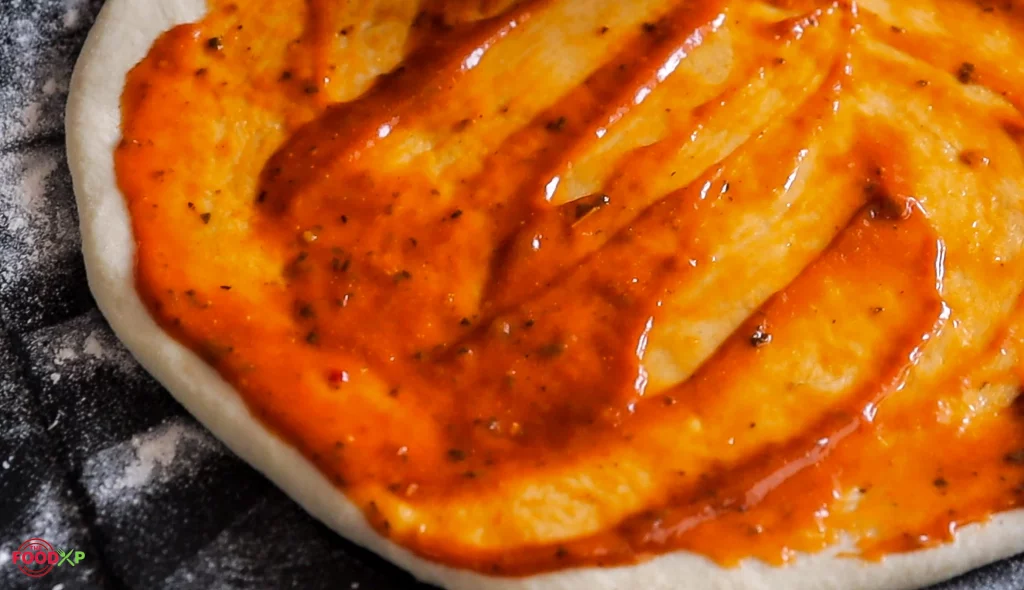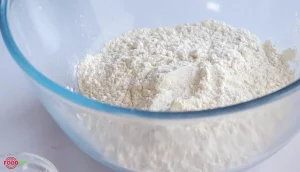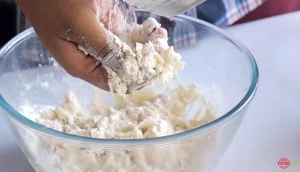You don’t need professional chef skills or a brick oven to make a restaurant-style pizza. All you need is a grill, some ingredients, and Gordon Ramsay’s pizza recipe and you can make a delicious pizza at home. Seek out the full detailed recipe in the article below. Also, we’ve covered a lot of Gordon Ramsay recipes that you should take a look at.

The star of this homemade pizza is actually its dough. The dough is kneaded to perfection and then given the rest it deserves. It is then flattened and cooked until crisp and bubbly. Anyone can add the toppings, but making the perfect base is the key to a good pizza.
To make Gordon Ramsay’s pizza, mix flour, salt, oil, and yeast in a bowl and then knead this mixture to make the dough. Let the dough rise and then divide it further into 4 balls. Roll out the pizza dough and top it with pizza sauce, mozzarella, rosemary, pepper, and oil. Place the pizza to bake in the oven for 20 minutes. The pizza will be ready in no time.
This is a summary of the recipe to give you an idea of it. You can find all the details of the recipe below. But first, check out some other recipes from the Chef’s delight.
What's In The Post
Other Gordon Ramsay Recipes That You Can Try
- Gordon Ramsay Mac And Cheese
- Gordon Ramsay Gnocchi
- Gordon Ramsay Sticky Toffee Pudding
- Gordon Ramsay Eggnog
- Gordon Ramsay Cauliflower Cheese
- Gordon Ramsay Rocket Mushroom And Bacon Quiche
- Gordon Ramsay Toad In The Hole
- Gordon Ramsay Filet Mignon
- Gordon Ramsay Lobster Capellini
- Gordon Ramsay Skirt Steak

What Equipment Will You Need To Make Gordon Ramsay Pizza?
- Oven – Place the pizza to bake evenly at 180 degrees C in the oven.
- Spatula – Slather the pizza sauce with a help of a small spatula or a spoon.
- Bowl – Mix the dry rubs for the dough in a small bowl.
- Rolling Pin – Roll out the pizza dough with a help of a rolling pin.
- Grater – Shred some mozzarella cheese on top of the pizza using a grater.
How Much Time Will You Need To Make Gordon Ramsay Pizza?
| Preparation Time | Resting Time | Cooking Time | Total Time |
|---|---|---|---|
| 5 Minutes | 30 Minutes | 20 Minutes | 55 Minutes |
What Ingredients Will You Need To Make Gordon Ramsay Pizza?
- Dried Yeast – Adding yeast will help in raising the dough.
- All-Purpose Flour – Take some all-purpose flour to prepare the pizza in your kitchen.
- Warm Water – Knead the dough using Luke warm water.
- Golden Caster Sugar – A teaspoon of sugar helps in achieving a nice texture of the dough.
- Sea Salt – Add salt to your taste.
- Extra Virgin Olive Oil – Bake the pizza base with extra virgin olive oil splash.
For Toppings
- Mozzarella Cheese – Top up the pizza with some shredded mozzarella cheese.
- Rosemary – Dried rosemary will enhance the flavors and taste of the pizza. Spread some rosemary leaves on top of the pizza before you go ahead and bake.
- Pizza Sauce – When the pizza base is half cooked, slather some pizza sauce on the top for juicy and spicy sharpness.
- Freshly Ground Black Pepper – Season the pizza with a pinch of black pepper.

Steps To Make Gordon Ramsay Pizza
1. Begin With The Dough
Take a small bowl and activate instant yeast for 5 minutes. Meanwhile in another bowl, add flour, salt, sugar, and olive oil. Mix it well. Soon after the yeast is activated, add it to the bowl of flour. Dust the bowl with flour and place the dough in it. Cover it with a tea towel and set it aside for an hour until it doubles in size. When it’s risen, punch the air out of it and knead it for 2 minutes. Then, divide it into 4 equal dough balls. Roll the balls with the help of a rolling pin until they are just the size of the pan.
2. Beautify The Pizza
Slather a tablespoon of pizza sauce on top of the rolled dough. Tear up the mozzarella and shred some on the pizza followed by rosemary, salt, and black pepper. Place the pizza in the oven to bake at 180 degrees C for 15-20 minutes.
Nutritional Information
| Calories | 170 kcal |
| Carbohydrates | 18 g |
| Sodium | 398 g |
| Cholesterol | 6.8 mg |
| Dietary Fiber | 1.6 g |
| Protein | 4.5 g |
| Fat | 9 g |
| Sugar | 1.6 g |
How Will Gordon Ramsay Pizza Look And Taste Like?
Gordon Ramsay pizza looks appetizing and satiating. Prepared in a simple frying pan this Ramsay style pizza is so easy to prepare at home. The crispy pizza topped with basil flavors, and oozing cheesy blend will give you a lip-smacking experience.
Recipe Card
Gordon Ramsay Pizza Recipe
Equipment
- Oven
- Spatula
- Bowl
- Rolling Pin
- Grater
Ingredients
For Pizza Dough
- 2 7g Sachets Dried Yeast
- 500 g All-Purpose Flour
- 1 tablespoon Golden Caster Sugar
- ½ cup Warm Water
- 1 tablespoon Fine Sea Salt
- 4 tablespoons Extra Virgin Olive Oil
For Toppings
- 2 balls Mozzarella Cheese
- 2 sprigs Rosemary
- 8 tablespoons Pizza Sauce
- 1 teaspoon Freshly Ground Black Pepper
Instructions
Making The Dough
- In a small bowl, mix yeast with 325 ml of water and set it aside for a few minutes. In another large bowl, add flour and salt and mix them. Make a well in the idle of the flour and pour oil and the yeast mixture into it.
- Using a spoon, mix the flour with the oil and yeast until a dough starts to form. Then, knead it properly for about 10 minutes to make a smooth dough.
- Dust the bowl with flour and place the dough in it. Cover it with a tea towel and set it aside for an hour until it doubles in size.
- When it’s risen, punch the air out of it and knead it for 2 minutes. Then, divide it into 4 equal dough balls.
- Roll the balls with the help of a rolling pin until they are just the size of the frying pan.
Making The Pizza
- Slather the pizza sauce over the base. Shred some mozzarella cheese on the base generously. Sprinkle a few rosemary leaves over the base too.
- Sprinkle a teaspoon of salt and black pepper.
- Drizzle some olive oil over the pizza base and place it in the oven to bake the pizza for 15-20 minutes at 180 degrees C
- Take the pizza out of the pan and cut it into slices and serve
Video
Nutrition
Frequently Asked Questions (FAQs)
Does Pineapple go on pizza Gordon Ramsay?
The British chef has already expressed his disdain earlier on a show and in his tweet when he said, pineapple does not go on top of pizza.
Is oregano important for pizza?
A quintessential Italian herb, oregano is important and it brings an earthy and sweet aroma to your pizza.
What’s the best cheese for pizza?
Mozzarella is considered the best cheese for pizza for a few reasons: its delicate, milky flavor, its smooth, elastic texture, and its fabulous meltability.
What temperature do you bake pizza at?
The best oven temperature for pizza is between 450 and 500 degrees F (250 to 260 degrees C.
Get your hands on Gordon Ramsay pizza in your kitchen. Leave us your feedback in the comment section below.








